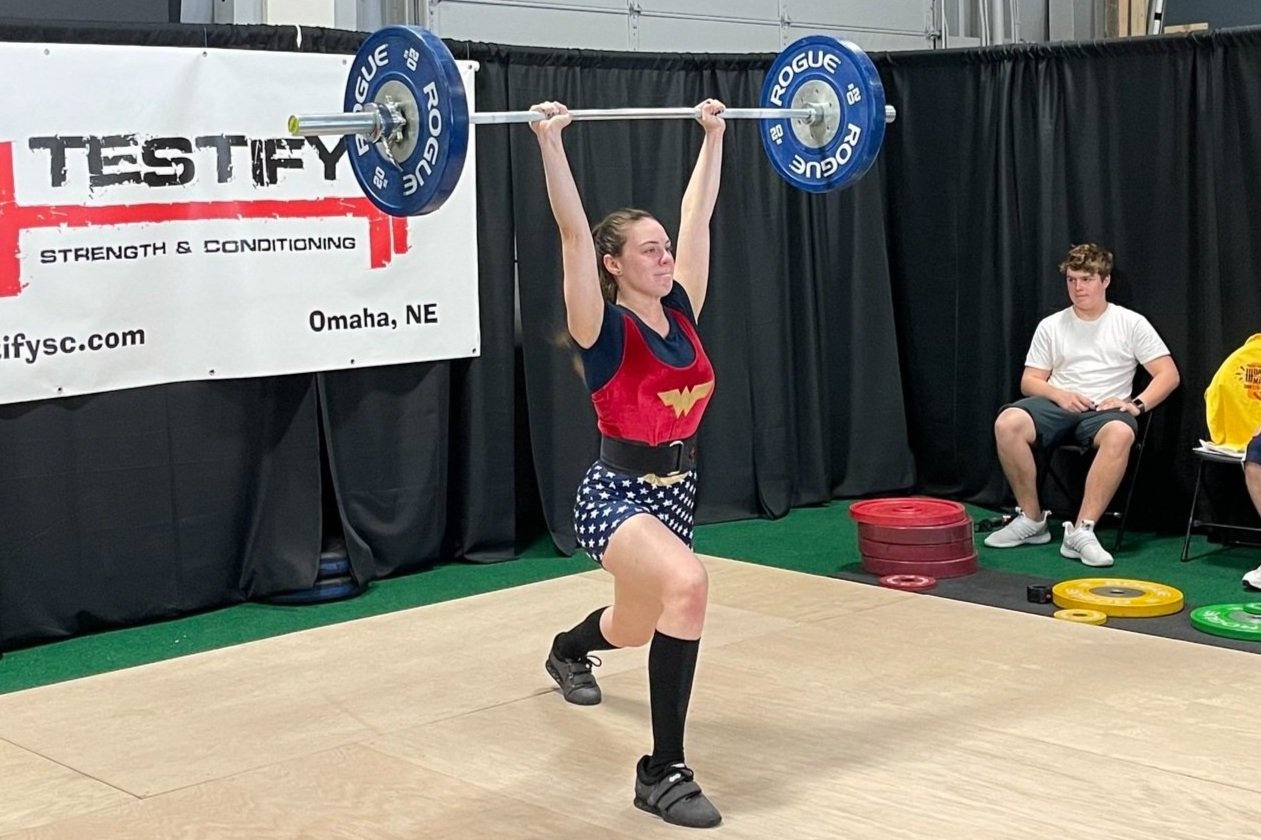The Jerk: Landing Positions
/(A Blast from the Past article originally posted on 07/02/21)
We’ve covered the three landing positions for both the snatch and the clean in past articles, and not surprisingly, there are also three landing positions for the jerk. Again, each has its own advantages, so let’s briefly cover them:
POWER JERK
Landing Position: Partial squat
Jonny performs a power jerk.
Advantage: The power jerk is the simplest to learn as your feet do not travel far from their original position. Your feet don’t move very much as they barely leave the ground and then immediately land in a squat-width stance. You receive the bar overhead with your hips and legs in a partial-depth squat position. Due to its simplicity, the power jerk often serves as an intermediate step on the way to learning either the squat jerk or the split jerk.
Note: If your feet never leave the ground during this movement, many coaches will call this a push jerk to distinguish it from a power jerk (but some coaches use the terms interchangeably).
SQUAT JERK
Landing Position: Squat (i.e., full-depth squat)
Jonny performs a squat jerk.
Advantage: Of the three landing positions, the squat jerk allows lifters to drop the farthest under the bar, which means the barbell doesn’t have to be lifted as high before locking it out overhead. With this in mind, there is great potential with the squat jerk, but this potential is tempered by two drawbacks - first, the lifter needs excellent flexibility to achieve what is essentially a narrow-grip overhead squat position in the receiving position for this jerk, and second, the lifter has relatively little stability from front-to-back due to the lack of a split (see the split jerk below), so the squat jerk is extremely unforgiving of jerks that are slightly forward or backward.
SPLIT JERK
Landing Position: Split stance
Jonny performs a split jerk.
Advantage: The split jerk allows the lifter to drop further under the bar than the power jerk without requiring the ability to drop into the squat jerk position, and due to the front-to-back split, the split jerk is more stable. For this reason, the split jerk is - by far - the most commonly executed jerk in training and competition.
As always, we hope this helps you get stronger and live better.
-Phil
PS: Whenever you want even more Testify in your life, here are some free resources:
Book a free intro and strategy session with us HERE.
Pick up a free copy of Testify’s Squat Guide: 12 Tips to Improve Your Squat Now HERE.
Get our free weekly email - containing useful videos, articles, and training tips - HERE.
Follow Testify on Instagram HERE.
Subscribe to Testify’s YouTube channel HERE.
(Some links may be affiliate links. As an Amazon Associate, Testify earns from qualifying purchases.)










